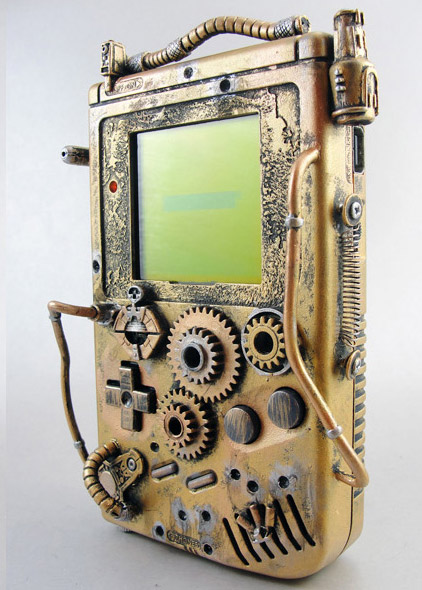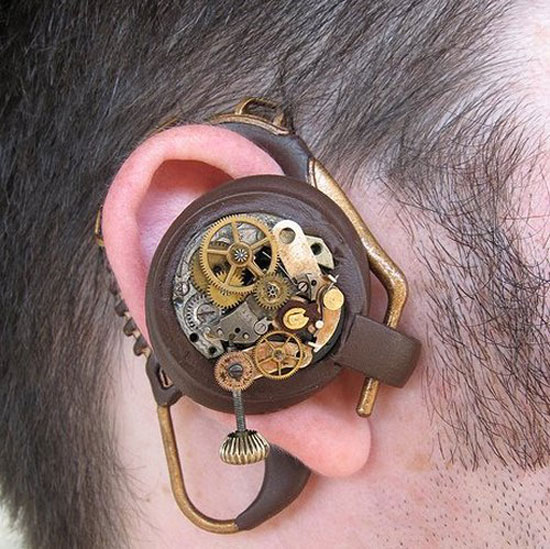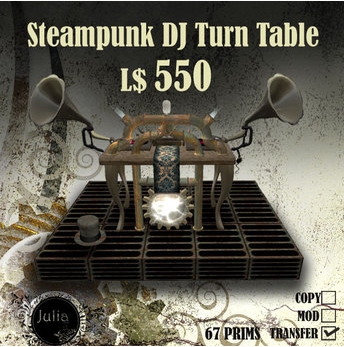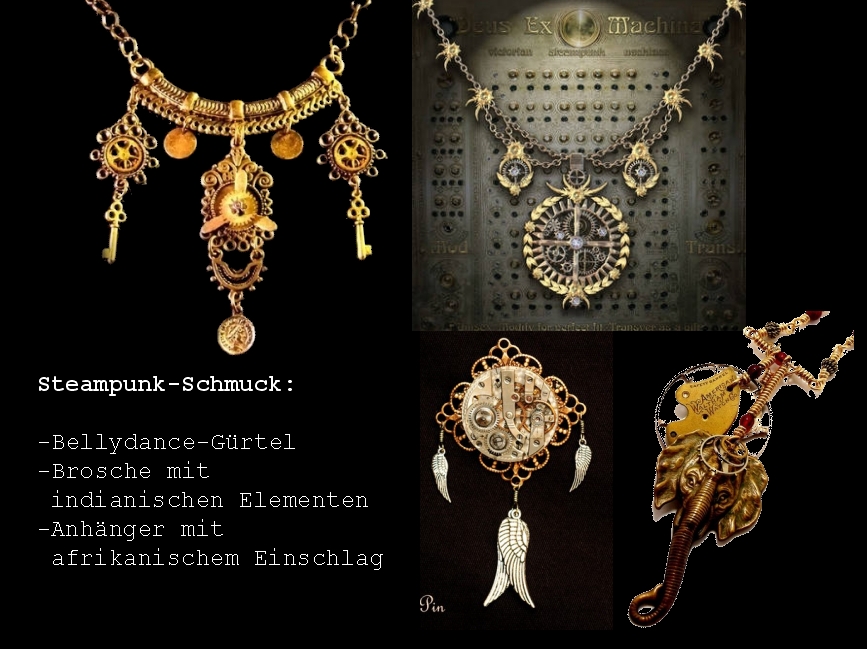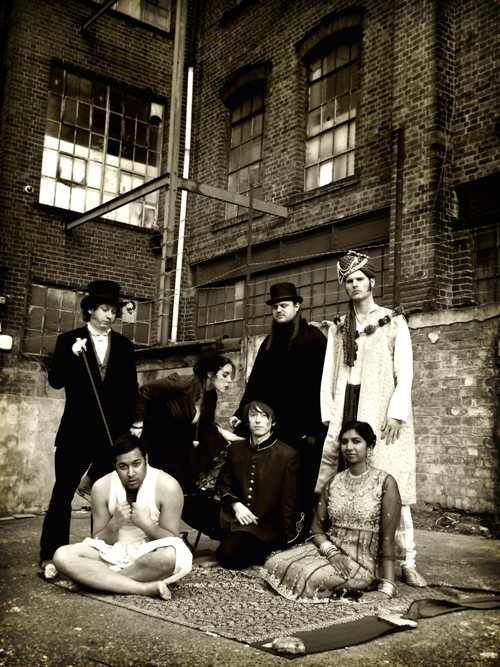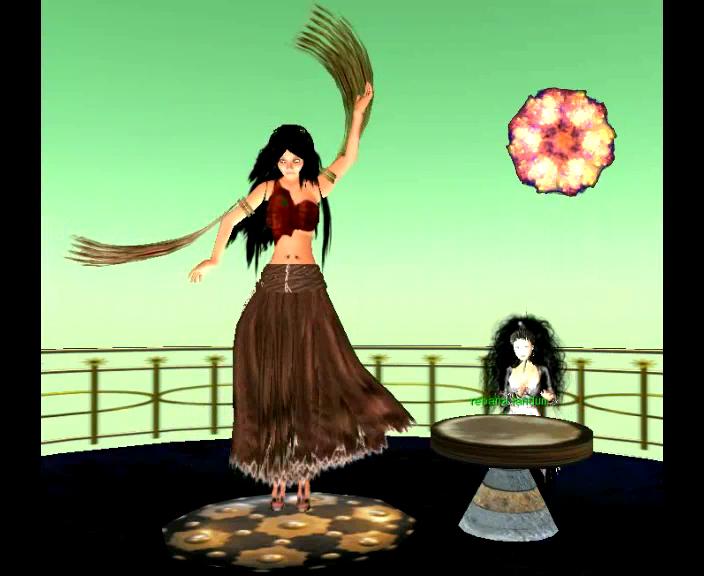Steampunk
– das virtuelle Revival einer Retro-Dystopie und ihre sonische
Gestalt als musikpädagogische Herausforderung
(überarbeitet am 10.03.2021 und optimiert für Win10 und 1440x900px)
Für den musikpädagogischen
Kontext gilt die bereits des öfteren auch in meinen Publikationen
und Vorträgen dargelegte Forderung nach allgemeinbildender Viabilität
von Unterrichtsinhalten, so dass nicht spezialisierte Wissenschaftsexperten
erreicht werden, sondern Anknüpfungspunkte und Anwendbarkeit Menschen
plausibel erscheinen, die ihr Alltagsleben zwar eventuell sogar intensiv
durch Musik gestalten und gliedern, jedoch keinen professionellen Bezug
dazu haben oder haben wollen.
Wie bereits bei der Thematik des indischen und transkulturierten Bhangra
erwähnt (Claus-Bachmann,
Musik kulturell vermitteln 2006), stellen aktuelle kulturelle Systeme
und Subsysteme für Jugendliche, denen schulische Musikpädagogik-Bemühungen
meist gelten, in der Phase der eigenen kulturellen Selbstfindung und mentalen
Konstruktionsbestrebung eine motivationale Schnittstelle dar. Das Kennenlernen
der systemischen Konstruiertheit von Kulturen allgemein, das Wissen um
kulturbezogene Konstruktionsstrategien sowohl beim einzelnen Individuum
als auch bei Gruppen kann der Zielgruppe musikpädagogischer Bemühungen
Orientierungshilfe in einer multi-, inter- und transkulturierten Umgebung
werden und sie beim Prozess der Identitätsfindung ordnend und Verständnis
schaffend begleiten. Das ist das, was ich als Teil von kultureller
Kompetenz bezeichne.
Wenn darüber hinaus auch die mediale Affinität der mit Computer,
Computerspielen, Handy und IPhone wie selbstverständlich aufgewachsenen
Generation berücksichtigt wird und ihre diesbezüglichen Fertigkeiten
in die Unterrichtsgestaltung einfließen können, indem medienhandwerkliche
Projekte initiiert werden, wenn darüber hinaus mit allen Sinnen
unmittelbare und mittelbare
musikbezogene Erfahrungen gemacht werden dürfen, dann steht einem
erfolgreichen musikpädagogischen Handeln nicht mehr viel im Wege.
Ich sehe in den vorgestellten Materialien zur Steampunk-Kultur vier sinnstiftende
Ziele, die musikpädagogisch relevant werden könnten und die
unterschiedliche didaktische Handlungsorientierung böten.
The context of music education demands lectures that are useful for common-education, and not only my publications often have articulated this demand. Rather than achieving the academic specialist, the applicability and points of contact should appear plausible for people who are not at all professional musicians, but who create and arrange the structure of their lives possibly most intensively with music. As mentioned in my article on the topic of Indian and transculturated Bhangra (Claus-Bachmann, Musik kulturell vermitteln 2006), actual cultural systems and subsystems are a motivational intersection for young people as a target group of music educational efforts during phases of cultural self-discovery and identity construction. Getting to know the systemic constructedness of cultures, the knowledge of culture-oriented construction strategies for individuals as well as for groups can be an orientation guide for the target group in a multi-, inter- and transcultural environment and can accompany them during the process of finding and regulating identity and establishing understanding. That is a part of my imagination of cultural competence. If we consider the media savvyness of the generation that has grown up naturally with computers, games, mobiles and iphones, and if these abilities can be integrated in the classroom syllabus by initiating manual media projects and by arranging direct and indirect musical experiences for all senses, then music educational efforts might be enduringly effective.
I can
see four meaningful targets in the materials presented above on the steampunk
culture which might become relevant for music education and which would
offer different didactic strategies.
4.1 Das erste wäre die immersive Erfahrungserschließung musikkultureller Ausdrucksformen des Steampunk in der Virtualität als Form des eLearning. SchülerInnen begeben sich z.B. in die Rolle des Musikforschers, erkunden Auftrittsorte und -Zeiten von Steampunk-Musikern in virtuellen Welten, machen eigene Interviews und erfahren dadurch etwas über Arbeitsbedingungen und Musikbusiness in der Virtualität und können diese mit der physisch-materiellen Welt vergleichen:
The first one would be the development of immersive experiences in music cultural forms of expression of steampunk in the virtuality as a special form of eLearning. Students take the role of a music researcher, e.g., conducting interviews and collecting information on the music business in the virtuality and comparing that information with conditions in the physical-material world:
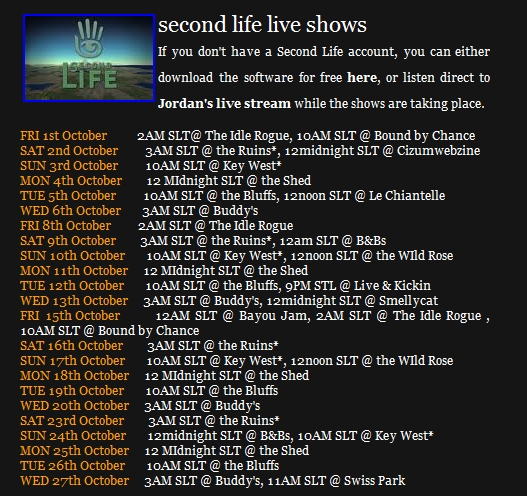 |
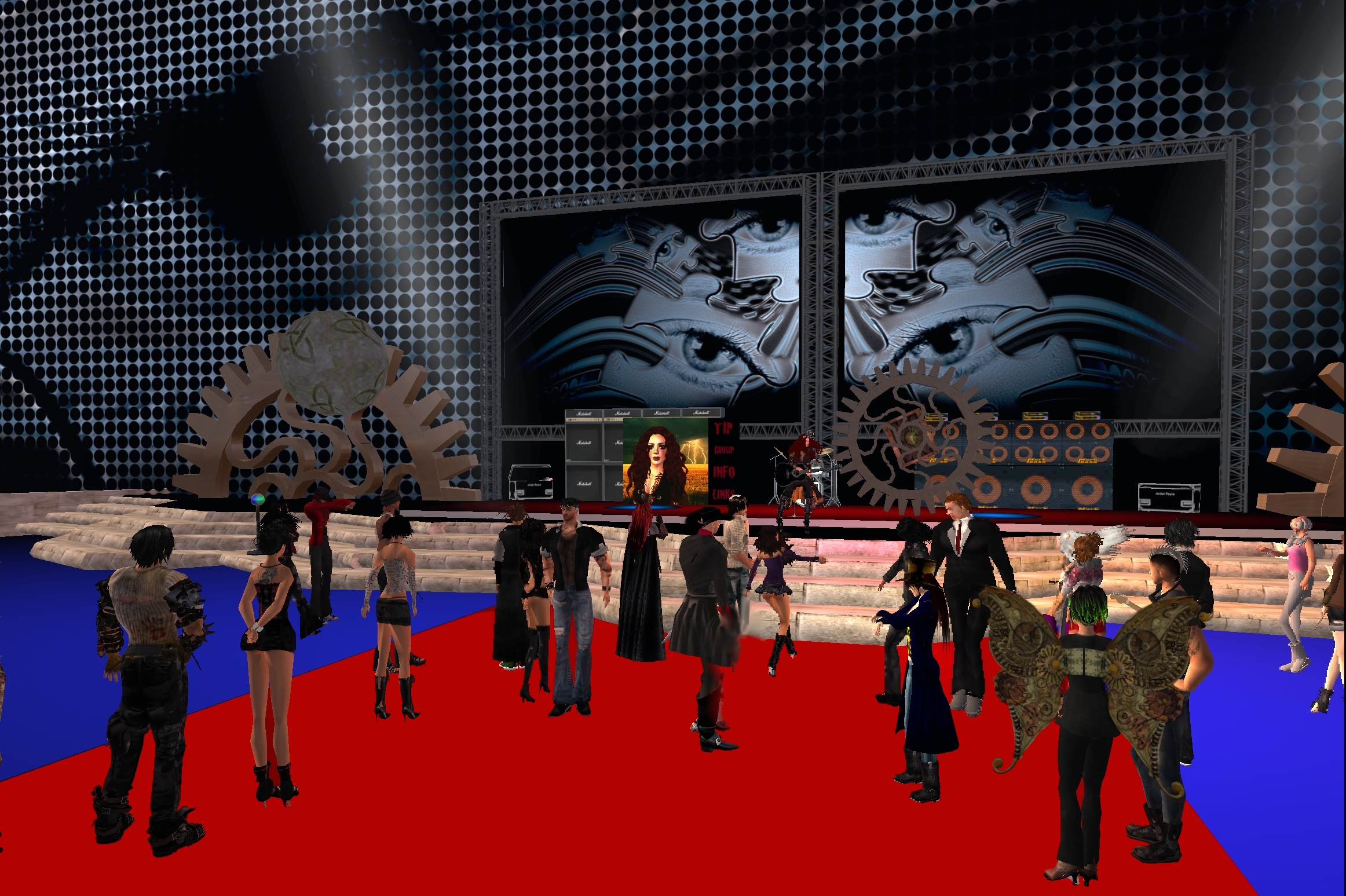 |
4.2 Als zweite Möglichkeit böte sich die Do-It-Yourself-Ausrichtung
des Steampunk an, die handlungsorientiert zu einem Bau
von Klangwerkzeugen aus Zahnrädern und Metallplatten anregen
könnte, spätere kollektive Klang-Improvisationen damit eingeschlossen.
Hier zur Anregung einige Beispiele von Objekten, die aus der physisch-materiellen
Welt kommend im Virtuellen nachgebaut wurden - auch eine Möglichkeit,
im Projektrahmen kreativ zu werden:
The second possibility would be the do-it-yourself orientation of steampunk motivating the students to activity based creations of sound generators with gears and metal bars including the subsequent collective sound improvisation. Here some motivational examples of objects being taken from the physical-material world and being reconstructed in the virtuality - with the additional possibility of becoming active in the framework of a project:
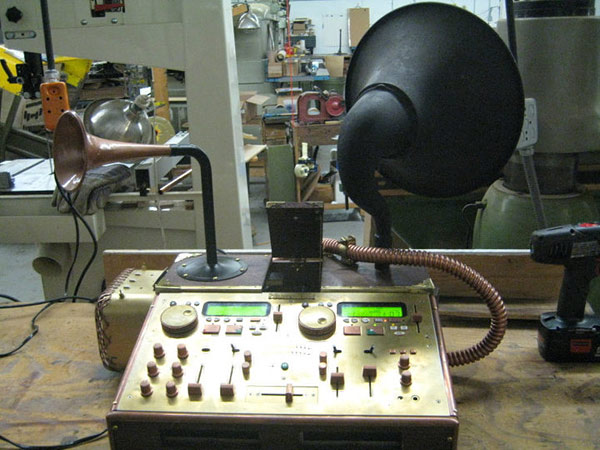 |
4.3 Die dritte Möglichkeit beträfe die multi-,
inter- und transkulturierten Ausdrucksformen, die Steampunk unmittelbar
aufgreift, was sich z.B. an Schmuck und Mode nachweisen lässt ...
The third possibility refers to the multi-, inter- and transcultural forms of expression directly adapted by steampunk that can be shown, e.g., in jewelry and fashion ...
... aber auch in der Musik, wie das Beispiel einer weiteren Steampunk-Band mit Namen "Sunday Driver" zeigt. Nicht zuletzt aufgrund mehrerer indischer Mitglieder nimmt die Band Bezug auf die Tatsache, dass Indien zu Zeiten Queen Viktorias Kolonie des britischen Empire war und so findet sich auf der CD "In the City of Dreadful Night" das Gayatri-Mantra in transkulturierter Form, klingt zunächst nicht unbedingt wie die bisherigen Beispiele, der transkulturelle Steampunk-Charakter (rechts) wird jedoch transparenter, wenn man die traditionelle Originalversion hört (links):
... but also in music, like in the example of another steampunk band called "Sunday Driver." Least not because of some group members of Indian origin, the band refers to the fact that India has been a colony of the British Empire in the Victorian era, and so we can find on the CD "In the City of Dreadful Night" the Gayatri-Mantra in a transcultured form, sounding different from the earlier examples, but becoming more transparent in its transcultural steampunk character (right), after listening to the traditional version of the mantra (left):
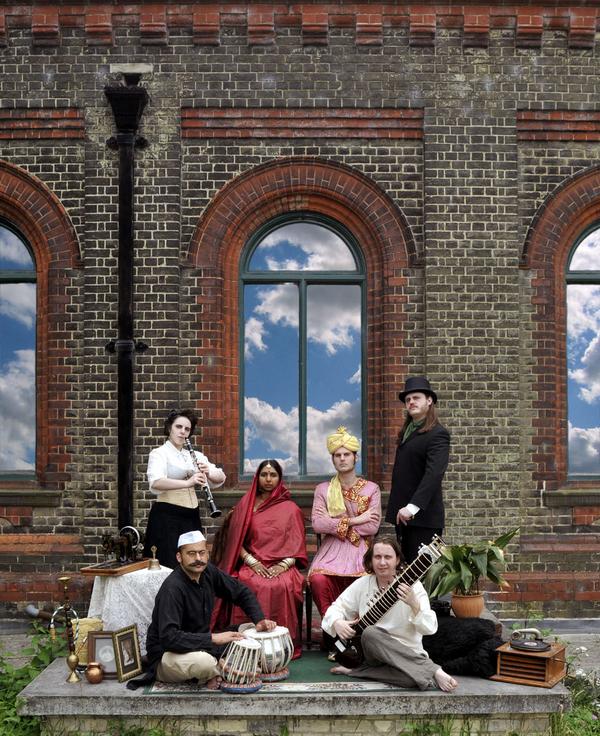 |
|
4.4 Eine angewandte Umsetzungsmöglichkeit von Transkulturalität
bestünde, wie bereits angedeutet, in einer bewegungsorientierten
Musikpädagogik, die ein gewisses Repertoire
der Bellydance-Pattern erarbeiten würde, um dann zu einem ausgewählten
Steampunk-Musikstück, z.B. von Pentaphobe eine gemeinsame Choreographie
zu erfinden und diese dann als fächerübergreifendes Gemeinschaftsprojekt
mit kulturadäquaten Kostümen und Bühnenbildern zu inszenieren
und zu präsentieren. Auch hier kann wiederum dual gearbeitet werden,
in der Virtualität zu Jordan Reynes oder Pentaphobes Musik ...
An applied alternative of a transcultural approach, as already mentioned, could consist of a movement orientation. A certain repertoire of patterns could be developed and then combined in the collective invention of a choreography. The final result could be presented with culture appropriate costumes and stage settings as an interdisciplinary project. Here we can again work in duality, in the virtuality with the music of Jordan Reyne or Pentaphobe ...
|
|
|
... und/oder in der physischen Realität; das zweite Beispiel zeigt als Abschluss eine Choreographie zu Pentaphobes "Saiidi" und die renommierten Tänzerinnen Rachel Brice, Sharon Kihara, Michelle Campbell und zwei namentlich nicht genannte Kolleginnen bei einer Performance in Paris:
...
and/or in the physical reality; the second example ends with choreography
on Pentaphobe's "Saiidi" and the well reputed female dancers
Rachel Brice, Sharon Kihara, Michelle Campbell and two anonymous colleagues
in a performance in Paris:
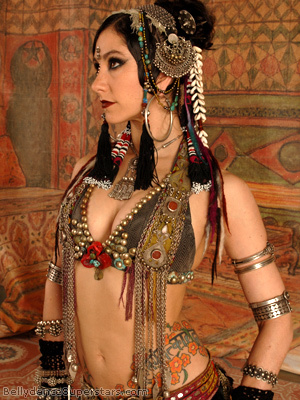 |
copyright ulme-mini-verlag 2010

